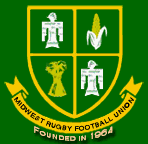
ESRFC logo
It’s probably very safe to assume that very few rugby players in the Midwest, especially in the lower divisions, have played on a regulation rugby pitch. This is to be expected because there are very few rugby complexes in the US or sports complexes equipped to hold a rugby pitch to begin with.
There is, though, a big difference between a field that is a little too short or a tad too thin. There is even a case to be made for fields that are not the most level or well manicured patches of earth in existence. These allowances have their limits, though.
Land is not cheap, especially in this climate of worthless 40IKs and $5.00 gallons of gas (All rights to that saying reserved for Roger Mazzarella), but if teams are going to invest the money they have in a location they should at least find themselves a decent piece of land. Neglecting to do so is a detriment to the game in a number of facets and irresponsible.
First, if a field is not level to an extreme degree it is hazardous to the well-being of players who are going to be competing on it. Take, for instance, the line-out. If one team is on a higher patch of land than the other they are at a clear advantage; but more than that, if the jumper comes down funny on the unlevel turf at the very least that’s a hurt ankle. At worst, the downed player could get trampled. Also, if a player is running the ball and does not see a sudden drop in elevation he or she could bring their weight down ont their wrong and severely injure their foot.*
Second, finding a field that is somewhat out in the open is important to have as well. If the only field that is available is in a fenced-in area then that is fine. There is a big difference between setting a field inside a park and shoving it onto a plot of land sized for use by children. The issue comes into play here when the fence interferes with play. There’s a field in Pennsylvania where the fence surrounding the pitch juts out into one of the try zones. Not only does this make for an awkward try zone considering the field’s boundaries extend past the point of the fence, but it is a serious health hazard to the players competing on the field. hay bales in front of a metal post can only do so much.
Also, shoving a field into a park surrounded by busy city streets creates a dangerous atmosphere. Not only is there the possibility of debris on the field, but when every kick goes into the street it puts players in danger of getting hit by cars. Nobody wants to lose a rookie that way.
Once a team finds a field, outfitting it with the proper amenities is a must. This doesn’t mean a team needs to shell out thousands of dollars for the finest of IRB USA Rugbyregulation goal posts, flags, cones and pads, but it also doesn’t mean to half-ass your field set-up. Times are tough and wallets are notoriously light but there are cheap and effective alternatives available at most stores.
Need flags to mark the lines? Dicks Sporting Goods has sets for sale online. Need cones? They’ve got that too. Field paint can be found at just about any paint shop.
Cones, flags and paint are cheap and easy fixes, though. Goal posts are bigger more complicated issues. There is virtually no way to purchase a cheap set, so teams often turn to creating their own. Everything from PVC pipe to metal pipes have been used to construct uprights and crossbars on rugby fields. Those, if done right and with care, will more than do the trick. The key is that is should be done right. This means care should be taken to ensure that:
- the pipes are straight
- the pipes are the proper height
- the crossbars should be level with one another
- the goal posts are proper dimensions
- the crossbars are straight
- the goal posts are sturdy
The goal posts are the most important part of a club having a legitimate field and, on the same token, a legitimate team. This is because these elements of the pitch play a pivotal and direct role in scoring points during a game. Plus, if the posts are not as strong as they would be they could fall down and seriously hurt the players and referee on the pitch.
Having, essentially, a bullshit, half-assed rugby pitch is a detriment to everybody involved with the sport. It sends the message to outsiders that a crap field with goal posts that have caution tape for crossbars is passable by our standards. It shows incoming rookies that are new to the sport that they have just gotten involved with a program and a sport that has low standards and expectations from its players. It shows people who the ruggers at that pitch doesn’t take themselves, their club or their sport seriously.

Midwest Rugby Union
Perhaps it would help to have people inspect fields clubs play on. Perhaps referees could do note it as they officiate a match. It would add more responsibilities to the already big job that comes with being an official, but it would only be a benefit to the sport of rugby as a whole. Standards help people have an idea of what level they need to reach. Setting standards higher, even at the lower divisions, will raise the bar for everybody and give the sport, its clubs and its players a newer, better look.
*I know that rugby is a rough sport and that every player that signs up for it does so knowing the inherent risks involved, but why take any chances and create more opportunities for injuries to happen?
41.474566
-81.528994
Check out the latest from Cleveland's premier rugby team!

